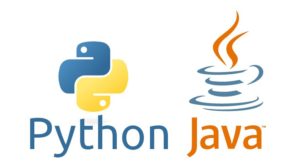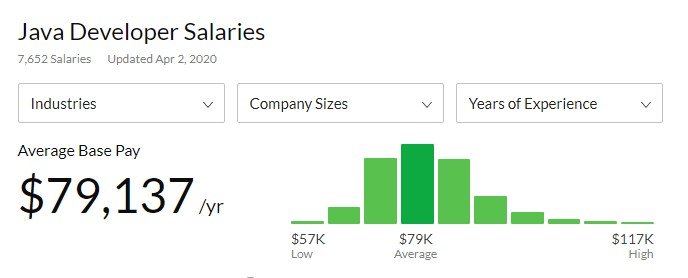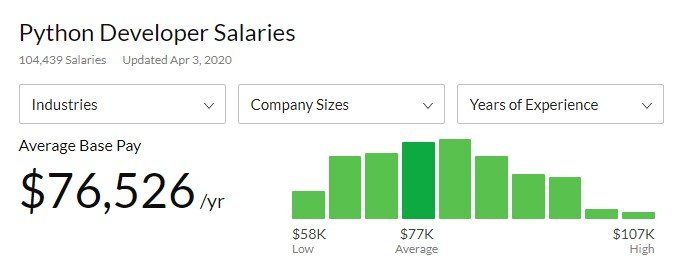The disputes related to Java and Python have been ongoing for years. If you look at the current trends and the lists of the most popular programming languages, you’ll see that Java consistently topped them. The popularity of Python has also grown impressively in recent years.
There are many reasons why these two programming languages rock nowadays. They both provide solid cross-platform support, have well-documented standard libraries and large communities.
Both have achieved a high level of popularity in the software development world. But do you exactly know which one is right for you? Are Java and Python similar? If you are reading this post, you probably have some hesitations and open questions. Compare Python and Java and let us know which one you prefer in the comments below.

Contents
Java and Python Definitions
- Java is a statically typed general-purpose and object-oriented programming language that is widely used for developing various applications from mobile to web ones. This language was designed to perform on any platform with as few dependencies as possible, with the help of the JVM (Java Virtual Machine).
- Python is a high-level, dynamically-typed and object-oriented programming language predominantly used for web development, automation, machine learning, artificial intelligence, and other data science apps. Python’s early development was related to the creation of a higher-level language to bridge the gap between C and the shell.
Java vs Python: Which is Better?
There are many similarities between Java and Python. They both have strong cross-platform support and provide extensive standard libraries. Both languages treat everything as objects. They compile to bytecode, however, Python is usually compiled at runtime. Now let’s take a closer look at some key differences between two programming languages.

Java
- Creator: James Gosling (Sun Microsystems).
- History: Initially, Java was called OAK. It was created for handling portable devices and set-top boxes. In 1995, the name was changed to Java. The language was modified to take advantage of the burgeoning www development business. In 2009, Oracle Corporation acquired Sun Microsystems. It took ownership of Java, Solaris, and MySQL.
- Open source status: Free and open-source (except for corporate use).
- Backend frameworks: Spring, Blade
- Platform dependencies: Platform-independent per its WORA (“write once, run anywhere”) concept.
- File creation: <filename>. class is generated after compilation.
- Compiled or interpreted: Compiled language. The programs are translated to byte code at compile time and not runtime.
- Errors: There are 2 types of errors: compile and runtime errors.
- Statically/dynamically: Java is statically typed.
- Syntax: Every statement must be ended with a semicolon ( ; ). Blocks of code are separated by curly braces ( {} ).
- Number of classes: Only one public top-level class can exist in a single
- Execution speed: Faster in execution time.
- Code length: More lines of code (compared to Python).
- Multiple inheritances: Does not support.
- Multi-threading: Supports 2+ concurrent threads running at the same time.
- Famous companies using it: Netflix, Airbnb, Spotify, Instagram, etc.
- Salary:

Python
- Creator: Guido van Rossum.
- History: Python was first mentioned in the late 1980s. However, its implementation began only in December 1989 in the Netherlands. The first version (0.9.0) was published in February 1999. Python was derived from the ABC programming language.
- Open source status: free and open-source for all use cases.
- Backend frameworks: Django, Flask
- Platform dependencies: platform-dependent.
- File creation: <filename>. рус is created during runtime.
- Compiled or interpreted: Interpreted language. The programs are translated at runtime.
- Errors: There is 1 error type – traceback or runtime error.
- Statically/dynamically: Python is dynamically typed.
- Syntax: Blocks of code are separated by indentation (it is possible to choose how many white spaces to use.
- Number of classes: Any number of classes can exist in a single file.
- Execution speed: Slower in execution time.
- Code length: Fewer lines of code (compared to Java).
- Multiple inheritances: Supports (although it is rarely implemented because of different issues like hierarchy, inheritance complexity, dependency issues, etc.)
- Multi-threading: Uses a global interpreter lock (GIL) that allows only a single thread to run at a time.
- Famous companies using it: Google, Technologies, Dropbox, Uber, etc.
- Salary:

Considering the facts described above, we can define the key benefits of two outstanding programming languages just to help you make your final choice.
Why Java
- Available detailed documentation.
- A huge set of third-party easy to navigate libraries.
- Ability to perform many tasks at the same time in a program because of a multi-threaded environment.
- There is a large pool of skilled developers.
- Ability to form standard programs and reusable code.
- Excellent performance.
Why Python
- Simple syntax (compared to Java, C, and C++).
- Handy and extensive library for developers
- Perfect for deep learning, machine learning, and the general AI field.
- Ability to use many prebuilt libraries that makes development easy.
- Cross-compatibility and auto-installed shell.
- Easy to write and debug code.
- Ability to run on a wide variety of operating systems and platforms.
- Supporting imperative and functional programming.
What about the disadvantages?
Here’re some of the most obvious pitfalls of Java:
- High memory and processing requirements (that’s why hardware cost increases).
- The program is rather slow (because of JIT compiler).
- No support for low-level programming constructs like pointers.
- No features like delete(), free() so you don’t have any control over garbage collection.
Python development also has some important drawbacks:
- It is interpreted, so it’s slower than its counterparts.
- Used in fewer platforms.
- Not used in app development as it is weak in mobile computing.
- The primitive database access layer.
- No commercial support.
Should I learn Python or Java first?
In fairness, it should be noted thaе there is no right answer to the question of which language is best for your start. We only can make some suggestions. The appropriate programming language for you will depend on what you strive to accomplish.
Professionals admit that Python is a good choice if:
- You are a beginner and looking for a simple first language.
- Your interests are machine learning and artificial intelligence.
- You are a data scientist first and a programmer second.
Java will be better for your choice if:
- You focus on developing cross-platform applications.
- Your aim is to develop Android apps.
- You prefer to develop backend solutions for large corporate systems.
- Developing video games is your choice.
If evaluate them in a completely generalized way, programmers choose Java for its great libraries, excellent tooling, a huge amount of documentation available, while Python looks preferable for its readable and beautiful code and rapid development.
What will you choose? Which programming language is better for you – Java or Python? We will glad to receive your private experience and comments!





